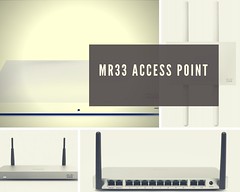Where To Get Wi Fi: A Comprehensive Guide
Wi-Fi refers to the technical standard for wireless networking. In essence, when you connect to Wi-Fi, you are connecting to a local area network (LAN) that provides high-speed internet access without requiring the use of physical wired connections. In today’s hyperconnected world, where reliable access to the internet is more of a requirement than an option, knowing where to get Wi-Fi can make your life significantly easier.
Public Places With Free Wi-Fi
You can typically find Wi-Fi in various public places. Many coffee shops, restaurants, and fast-food chains provide free Wi-Fi to their customers. Libraries, gyms, and community centers often offer free public Wi-Fi, and you can almost always access Wi-Fi in airports and hotels, although some may charge a fee for access. In some cities, you may also find free Wi-Fi in public parks or buses.
Educational Institutions
Educational institutes like colleges and universities often provide campus-wide Wi-Fi. These networks provide access to the internet for students to conduct research for their coursework or stay up-to-date with their academic schedule. However, to use these networks, you might need to provide valid credentials.
Workplace
Most modern workplaces provide Wi-Fi for employees to facilitate work that requires an internet connection. These may have password protection and access restrictions for security purposes.
Home Wi-Fi
You can also set up a Wi-Fi network at home. To do this, you would need an internet service provider (ISP), a router, and a Wi-Fi-capable device. Some ISPs provide the router as part of their packages.
Wi-Fi Hotspots
A more personal and portable version of Wi-Fi can come from a hotspot. Smartphones can be turned into hotspots by enabling the functionality in the settings menu. This creates a small wireless network that only you or people you give the password to can access.
Commercial Wi-Fi Hardware and Licenses
To enjoy reliable Wi-Fi connectivity, particularly in commercial environments, proper Wi-Fi hardware and licences are necessary. When setting up Wi-Fi networks for business purposes, IT professionals have a range of options in terms of hardware equipment and network licences that allow for variable levels of security and network control. One of the more popular choices today is Meraki’s MX Licensing system.
Meraki MX Enterprise License vs Advanced Security Comparison
When making a decision between the Meraki MX Enterprise License and the Advanced Security License, it’s important to understand the specific differences in features and security protections each license offers.The Enterprise License offers the basic capabilities necessary for running a commercial Wi-Fi network, including firewall, auto-VPN, identity-based policies, and more. It can cater to an unlimited number of users and offer client VPNs.In contrast, the Advanced Security License includes all of the features of the Enterprise License, but with additional high-end security facilities. It provides content filtering, intrusion detection and prevention, advanced malware protection, and other features. It is designed for businesses that require a higher level of security, such as those handling sensitive data or operating in a heavily regulated industry.Conclusion
Wi-Fi accessibility substantially relies on the place and the need of the user. Depending on the requirements and the situations, one can choose the most suitable method to access Wi-Fi. Remember, while using Public Wi-Fi, the user must take the necessary precautions to prevent unauthorized access to sensitive information.






